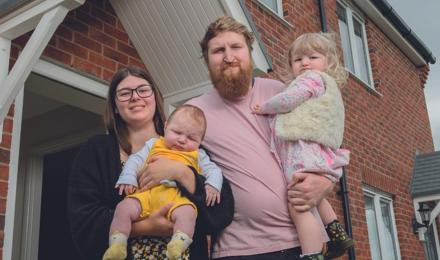Check your heating regularly
Even if you don’t feel the need to have your heating on regularly during the summer, it helps to switch it on for short periods from time to time to check everything's working correctly.
Keeping your heating off for long periods of time during warm weather means that when you do switch your heating on, your boiler has to work harder to warm up.
There are three main types of gas boilers: combination (commonly known as ‘combi’) boilers, system boilers and conventional/regular boilers.
Combi boilers are usually attached to the wall and there won't be a hot water cylinder or a water tank in the house. They generally have five or more pipes visible, although these could be hidden on some modern combi boilers. If you're still unsure if this is the type of boiler in your own home, turn on a hot tap for a few moments and you'll be able to hear the combi boiler turn itself on, to meet the demand for hot water.
If there are three copper pipes visible, this is a system boiler. A hot water cylinder will also be present, usually located in an airing cupboard but there will not be a cold-water storage tank (usually located in the loft). They tend to be installed in larger homes with higher demand for hot water from multiple locations at the same time.
You have a conventional boiler if there's a cold water storage tank located high up within the property (usually in the loft), a separate hot water cylinder (commonly located within an airing cupboard), and the boiler itself (typically located away from the hot water cylinder).
There will usually be two copper pipes at the top of the boiler, and one below it. As with system boilers, conventional boilers tend to be located within larger homes with higher demand for hot water.
Check your pressure
If you have a combi-boiler, it can lose pressure over time which may impact its efficiency. Topping up your system pressure is a quick and easy job, you can find instructions on how to do this on manufacturers' YouTube channels. You can also find instructions in a manufacturer’s installation manuals and if you're unsure, ask a Gas Safe Registered heating engineer for help.Bleed your radiators
Radiators that are a cooler temperature at the bottom than the top indicate that they have air trapped inside them and need bleeding. Radiators that need bleeding prevent your heating system running at optimum efficiency and put extra strain on your system.How to use your storage heater
Your storage heater has two settings:
- Input – for when you want to store up heat
- Output – for when you want to release the stored up heat, to warm up your home
The higher the setting, the more heat you’ll store up, or release.
5 top tips for your storage heater:
- Turn off the output setting – at night or when you’re not using a room or out of the house, basically when you don’t need your house to be warm
- Don’t use the boost setting – unless you really need the extra heat
- Try not to use additional plug-in heaters – it’s better to turn up the input setting on your heater and store more heat
- See if an Economy 7 tariff is worthwhile for you – be careful of switching as the daytime rates for electricity can be quite high, so it might not be worth it especially during the summer, click on this link to help figure it out
- Store cheaper electricity if you’re on an Economy 7 tariff – this tariff offers cheaper electricity during the night – store up heat in off-peak hours, and release it during the day
Electrical energy in your home
If you're interested in finding out more about electrical energy and how it can change your home, click on the links below to download our factsheets:

The impact we have on our climate and the world we leave for future generations is something we all have to think more and more of.

With the rising cost of energy bills, there are things you can do to help stay warm.

From keeping your home safe and secure, to giving it the care it deserves, here is everything you need.




